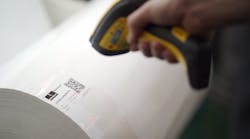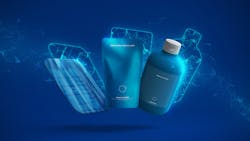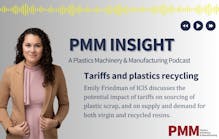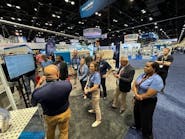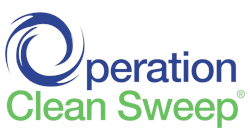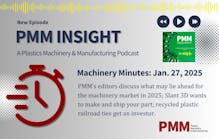By Ron Shinn
R-Cycle, the so-called digital product passport that identifies relevant recycling information in plastic packaging, has been in development since 2019 but it is set to make a big splash when it is formally introduced to the public at K 2022 in October.
R-Cycle originated and has been developed in Europe, where it will likely gain early commercial adopters. But the North American plastics industry needs to pay close attention. It could be a critical piece of the puzzle to improve the plastics value chain.
One of the most interesting aspects of R-Cycle is that it is being driven by major machinery manufacturers. The idea for R-Cycle started with Reifenhaüser. Then Arburg, Kautex and Brückner joined a consortium as founding partners with the Institute for Plastics Processing (IKV) at Germany’s Aachen University. Since the consortium kicked off in March 2020, Engel, Multivac, Illig, Comexi, Silver Plastics and Olbrich joined. Recycling machinery manufacturers Kampf, Erema, Sikoplast and Steinert have also joined.
Being able to identify content so packaging can be recycled would seem like an idea important to resin manufacturers. They are certainly going to benefit, since some virgin resin makers are now investing heavily in advanced recycling projects to address materials considered too difficult to recycle with mechanical processes.
But developing an open and globally applicable tracing standard for sustainable plastic packaging is not an easy task.
The R-Cycle process uses a nearly invisible digital watermark that is printed on the product, either by in-mold labeling, or etched on the part’s surface. The watermark can be digitally scanned during sorting. The scan checks a database that R-Cycle maintains that contains information on all resin and additives in the scanned part.
Benedikt Brenken, director of the R-Cycle initiative at Reifenhaüser, described the digital watermark like this in a recent interview: “The product passport consists of three things: Firstly, an ID number so that the product can be identified. Secondly, data that is recorded for it. We have defined that. The third is the marking that brings the product and ID number together — a bar code, a QR code, a digital watermark.”
Brenken said Reifenhaüser was developing technologies for packaging that would be easier to recycle when it realized there was not much value in recyclable packaging if it still ended up being burned or buried because sorting methods could not identify the material.
“Sorting is not sufficiently precise, and yet all the information needed for better recycling is available in our machines and systems,” Brenken said. “We already use it to control the process.”
Brenken continued: “Why therefore shouldn’t we be able to use this information across companies for recycling purposes? With this information, you can sort plastic waste better and achieve higher recyclate qualities. That was the beginning of R-Cycle.”
The consortium, which now has 20 member companies, has completed multiple pilot projects.
An R-Cycle spokesman said the system is now available as a market-ready solution and is being used by selected customers in commercial tests.
The goal is to achieve higher-quality recycling, and the efforts bring together packaging manufacturers, converters/processors and recyclers to achieve that. Every company that touches the package adds information to the product’s digital watermark so that when the package eventually reaches the recycler’s sorting line, it can be more precisely sorted.
To get everyone on the same program, R-Cycle has submitted its standard to Germany’s GS1, the leading global network for cross-industry process development. GS1 bar codes are already scanned more than six billion times a day worldwide. GS1 is expected to publish formal guidelines called “PDS4CircularPlastics” to the public later this year. An international guideline is expected to follow.
“The aim is to create the highest possible acceptance in the market via a non-proprietary approach and thus to drive international dissemination and scaling — because circular economy can only succeed if as many market participants as possible pursue the same goal,” an R-Cycle spokesman said.
The spokesman also said R-Cycle can make production more efficient, because machines networked to R-Cycle can access data from the digital passport and automatically add their own data. Downstream filling, slitting, winding and packaging lines can configure themselves automatically using R-Cycle data.
I predict that R-Cycle will be adopted across the European Union, perhaps with incentives or penalties. But not so much in North America, where we are slower to accept programs that are for the general good.
Trade associations, environmental groups and perhaps governments are going to have to give it a push. I hope that happens.
Ron Shinn, editor
Ron Shinn | Editor
Editor Ron Shinn is a co-founder of Plastics Machinery & Manufacturing and has been covering the plastics industry for more than 35 years. He leads the editorial team, directs coverage and sets the editorial calendar. He also writes features, including the Talking Points column and On the Factory Floor, and covers recycling and sustainability for PMM and Plastics Recycling.
